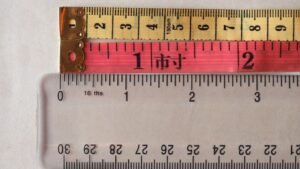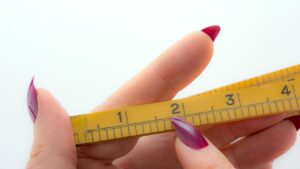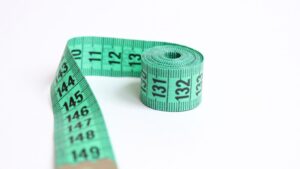Bir Inç Kaç Santimetre Eder
This section helps to better understand what exactly an inch and a bir inç kaç santimetre eder are, breaking it down so each unit of measurement is easily comprehendible. Knowing these dimensions is beneficial in numerous fields, and can simplify everyday tasks as well.
What is an Inch?

An bir inç kaç santimetre eder is equal to 1/12th of a foot or precisely 2.54 centimeters. It may be easier to visual an inch as about the width of an average adult thumb. In the digital world, an inch is typically represented by ‘in’ or double quotes (“) such as 12”.
What is a Centimeter?
A centimeter, in contrast to an inch, is a unit of length in the metric system which is used all over the world excluding the countries that still use the Imperial system. This unit is commonly applied in scientific, medical, and everyday usage worldwide.
One centimeter is equivalent to 1/100th of a meter or approximately 0.3937 inches. To give a further understanding, a centimeter is about the width of a standard paperclip. In written form or digital platform, it’s typically symbolized as ‘cm’.
Conversion Factors
Understanding Conversion Factors between inches and centimeters is a crucial information both in personal everyday applications and various industries. Let’s delve deeper into the specifics.
How Many Centimeters in an Inch?

How Many Inches in a Centimeter?
The reverse conversion, bir inç kaç santimetre eder, is equally significant. The answer is roughly 0.39 inches in a centimeter. This value is essential in countries where the imperial system is dominant, such as the United States. It’s the standard multiplier used for converting centimeters to inches.
This back-and-forth conversion between inches and centimeters doesn’t just apply to everyday mundane tasks. Whether it’s in architecture, engineering, sciences or countless other fields, these conversion factors are the building blocks of precision and accuracy.
Without these values, it might’ve been tremendously difficult to establish a common ground between different unit systems. And this uniformity is certainly one of the most profound achievements in the elements of measurement.
Converting Inches to Centimeters

Method 1: Using the Conversion Factor
The conversion factor for inches to centimeters is a small yet vital piece of mathematical data. 2.54 remains the internationally accepted figure when expanding inches to centimeters.
For instance, to convert 5 inches into centimeters, multiply by 2.54.
5 (Inches) * 2.54 (conversion factor) = 12.7 (Centimeters)
Being comfortable with this factor expedites every conversion calculation, making it a building block for everyone from students to professionals across multiple industries.
Method 2: Using a Conversion Table
While the use of the conversion factor works well, resorting to a conversion table can further simplify the process. A comprehensive conversion table can be an invaluable tool for rapid conversion tasks, as it provides the values already computed.
Converting Centimeters to Inches
Understanding the conversion process from centimeters to inches is just as crucial as it’s counterpart. It involves the same principle as converting inches to centimeters – the use of either a conversion factor or a conversion table – but in reverse order. It’s valuable to individuals who work regularly with measurements and dimensions.
Method 1: Using the Conversion Factor

For instance, to convert 10 centimeters to inches, the calculation would be:
10 cm * 0.393701 inches/cm = 3.93701 inches
But keep in mind that the precision of the converted value may depend on how many decimal places are taken into account with the conversion factor. Thus, it’s essential that the conversion factor used is accurate to the degree required for practical use.
Method 2: Using a Conversion Table
The other method of conversion no less helpful but it limits to the values provided in the table itself. It can be faster and more convenient when one must convert several commonly used values.
With such a table, converting centimeters to inches would mainly require looking up the desired value and finding its equivalent in the table. This is a handy method for those who prioritize quick, easy conversions over precise ones. The application and usage sectors of this method would be virtually the same as for the conversion factor, encompassing fields such as engineering, construction, architectural drafting, among others.
Significant Difference















